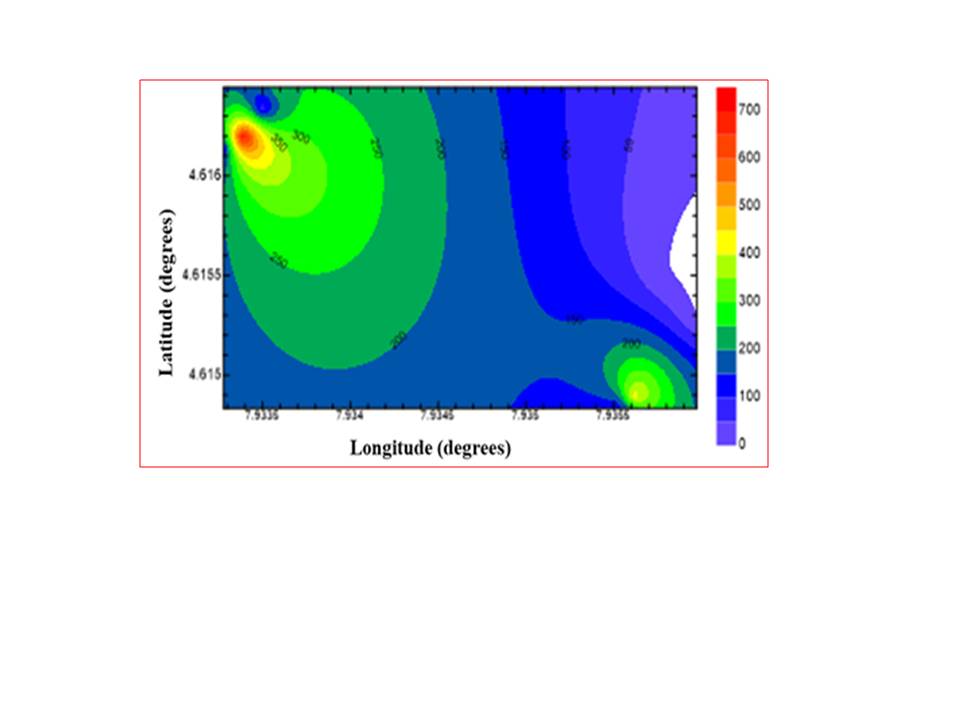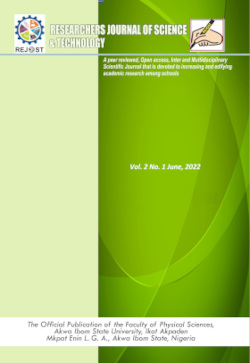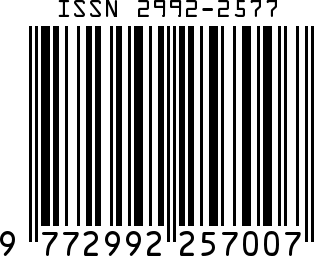Evaluation and modeling of a major coastal aquifer’s vulnerability to contamination with the use of GOD and AVI models as indicators in South-eastern Nigeria
Keywords:
Aquifer vulnerability index (AVI), GOD index, groundwater, contaminants, resistivityAbstract
Geophysical techniques were employed to evaluate the extent of a major coastal aquifer’s vulnerability to near-surface and subsurface contamination with the use of GOD and AVI vulnerability models in Akwa Ibom State, Southern-eastern Nigeria. The study area is strongly dependent on groundwater resources, hence it was important to evaluate the extent of aquifer vulnerability. Interpretations of the resistivity inversion models, constrained by well information, indicated the presence of three lithological layers (motley top soil, fine sand, and coarse sand). The resistivities of the first layer were generally larger than those of the underlying subsurface layers, indicating the percolation of contaminant material into the surrounding aquifer. The resistivity of the geological layers ranged from 1.3- 626 Ωm. Contour maps were used to illustrate the variations of various geological and geo-electrical parameters obtained at the study location. Resistivity data was also used to generate aquifer hydraulic data from which the aquifer vulnerability indices were determined to evaluate the vulnerability of the aquifer to pollutant contamination. The vulnerability indices used to determine the extent of aquifer vulnerability to contamination were the Aquifer Vulnerability Index (AVI) model and the Groundwater occurrence, Overlying layer and Depth to groundwater (GOD) model. The GOD indices ranged from 0.54 to 0.63 with a mean of 0.55, implying a high vulnerability to near-surface and subsurface contaminants. The AVI values had a range of 0.3 to 1.13with a mean value of 0.65, and based on AVI classification tables, the aquifer units have a very high vulnerability to contamination. These results corresponded with what was obtained from the GOD models showing that in general, the research area is highly susceptible to contamination.
References
Abu-Bakr, H. A., 2020. Groundwater vulnerability assessment in different types of aquifers. Agric Water Management 240 :106275. https://doi.org/10.1016/j.agwat-.2020.106275
Abdelmadjid, B. and Omar, S., 2013. Assessment of groundwater pollution by nitrates using intrinsic vulnerability methods: A case study of the Nil valley groundwater (Jijel, North-East Algeria). African Journal of Environmental Science and Technology, 7(10), pp.949-960.
Aller, L. and Thornhill, J., 1987. DRASTIC: a standardized system for evaluating ground water pollution potential using hydrogeologic settings. Robert S. Kerr Environmental Research Laboratory, Office of Research and Development, US Environmental Protection Agency.
Avbovbo, A.A., 1978. Tertiary lithostratigraphy of Niger delta. AAPG Bulletin, 62(2), pp.295-300.
Brindha, K. and Elango, L., 2015. Cross comparison of five popular groundwater pollution vulnerability index approaches. Journal of Hydrology, 524, pp.597-613
Chakravarthi, V., Shankar, G.B.K., Muralidharan, D., Harinarayana, T. and Sundararajan, N., 2007. An integrated geophysical approach for imaging subbasalt sedimentary basins: case study of Jam River Basin, India. Geophysics, 72(6), pp.B141-B147.
Daly, D. and Warren, W.P., 1998. Mapping groundwater vulnerability: the Irish perspective. Geological Society, London, Special Publications, 130(1), pp.179-190.
Edet, A., 2014. An aquifer vulnerability assessment of the Benin Formation aquifer, Calabar, southeastern Nigeria, using DRASTIC and GIS approach. Environmental Earth Sciences, 71(4), pp.1747-1765.
Egboka, B.C., Nwankwor, G.I., Orajaka, I.P. and Ejiofor, A.O., 1989. Principles and problems of environmental pollution of groundwater resources with case examples from developing countries. Environmental health perspectives, 83, pp.39-68.
Ekanem, A.M., 2020. Georesistivity modelling and appraisal of soil water retention capacity in Akwa Ibom State University main campus and its environs, Southern Nigeria. Modeling Earth Systems and Environment, 6(4), pp.2597-2608.
Ekanem, A. M., George, N. J., Thomas, J. E. and Nathaniel, E. U., 2020. Empirical relations between aquifer geohydraulic–geoelectric properties derived from surficial resistivity measurements in parts of AkwaIbom State, Southern Nigeria. Natural Resources Research, 29, pp.2635-2646.
Esu, E.O., Okereke, C.S. and Edet, A.E., 1999. A regional hydrostratigraphic study of AkwaIbom State, southeastern Nigeria. Global Journal of Pure and Applied Sciences, 5, pp.89-96.
Falowo, O.O., Akindureni, Y. and Ojo, O., 2017. Groundwater assessment and its intrinsic vulnerability studies using aquifer vulnerability index and GOD methods. International Journal of Energy and Environmental Science, 2(5), pp.103-116.
Fienen, M.N. and Arshad, M., 2016. The international scale of the groundwater issue. Integrated groundwater management: concepts, approaches and challenges, pp.21-48.
Foster, S.S.D., 1987. Fundamental concepts in aquifer vulnerability, pollution risk and protection strategy. In: Duijvenbooden, W.V. and Waegeningh, H.V., 1987. Vulnerability of soil and groundwater to pollutants: international conference Noordwijkann Zee, The Netherlands, March 30-April 3, 1987. The Hague: TNO Committee on Hydrological Research.
Foster, S., Hirata, R. and Andreo, B., 2013. The aquifer pollution vulnerability concept: aid or impediment in promoting groundwater protection?. Hydrogeology Journal, 21(7), p.1389.
George, N.J., Ekanem, A.M., Ibanga, J.I. and Udosen, N.I., 2017. Hydrodynamic implications of aquifer quality index (AQI) and flow zone indicator (FZI) in groundwater abstraction: a case study of coastal hydro-lithofacies in South-eastern Nigeria. Journal of Coastal Conservation, 21, pp.759-776.
George, N.J., Ekanem, K.R., Ekanem, A.M., Udosen, N.I. and Thomas, J.E., 2022. Generic comparison of ISM and LSIT interpretation of geo-resistivity technology data, using constraints of ground truths: a tool for efficient explorability of groundwater and related resources. ActaGeophysica, 70(3), pp.1223-1239.
Ghazavi, R. and Ebrahimi, Z., 2015. Assessing groundwater vulnerability to contamination in an arid environment using DRASTIC and GOD models. International Journal of Environmental Science and Technology, 12, pp.2909-2918.
Gogu, R.C. and Dassargues, A., 2000. Current trends and future challenges in groundwater vulnerability assessment using overlay and index methods. Environmental geology, 39, pp.549-559.
Harter, T. and Walker, L.G., 2001. Assessing vulnerability of groundwater.California Department of Health Services Report 1–11: Sacramento, CA, USA,
Ibuot, J.C., Okeke, F.N., George, N.J. and Obiora, D.N., 2017. Geophysical and physicochemical characterization of organic waste contamination of hydrolithofacies in the coastal dumpsite of AkwaIbom State, Southern Nigeria. Water Science and Technology: Water Supply, 17(6), pp.1626-1637.
Inim, I.J., Udosen, N.I., Tijani, M.N., Affiah, U.E. and George, N.J., 2020. Time-lapse electrical resistivity investigation of seawater intrusion in coastal aquifer of Ibeno, Southeastern Nigeria. Applied Water Science, 10(11), pp.1-12.
Kazakis, N. and Voudouris, K., 2011. Comparison of three applied methods of groundwater vulnerability mapping: A case study from the Florina basin, Northern Greece. In Advances in the Research of Aquatic Environment: Volume 2 (pp. 359-367). Berlin, Heidelberg: Springer Berlin Heidelberg.
Khan, S., Cao, Q., Zheng, Y.M., Huang, Y.Z. and Zhu, Y.G., 2008. Health risks of heavy metals in contaminated soils and food crops irrigated with wastewater in Beijing, China. Environmental pollution, 152(3), pp.686-692.
Kumar, A. and Pramod Krishna, A., 2020. Groundwater vulnerability and contamination risk assessment using GIS-based modified DRASTIC-LU model in hard rock aquifer system in India. Geocarto International, 35(11), pp.1149-1178.
Machiwal, D., Jha, M.K., Singh, V.P. and Mohan, C., 2018. Assessment and mapping of groundwater vulnerability to pollution: Current status and challenges. Earth-Science Reviews, 185, pp.901-927.
Mádl-Szőnyi, J. and Füle, L., 1998. Groundwater vulnerability assessment of the SW Trans-Danubian central range, Hungary. Environmental Geology, 35, pp.9-18.
Maxe, L. and Johansson, P.O., 1998. Assessing groundwater vulnerability using travel time and specific surface area as indicators. Hydrogeology Journal, 6, pp.441-449.
Mbipom, E.W., Okwueze, E.E. and Onwuegbuche, A.A., 1996. Estimation of transmissivity using VES data from the Mbaise area of Nigeria. Nigerian Journal of Physics, 85, pp.28-32.
Mfonka, Z., Ngoupayou, J.N., Ndjigui, P.D., Kpoumie, A., Zammouri, M., Ngouh, A.N., Mouncherou, O.F., Rakotondrabe, F. and Rasolomanana, E.H., 2018. A GIS-based DRASTIC and GOD models for assessing alterites aquifer of three experimental watersheds in Foumban (Western-Cameroon). Groundwater for Sustainable Development, 7, pp.250-264.
Neh, A.V., Ako, A.A., Ayuk II, A.R. and Hosono, T., 2015. DRASTIC-GIS model for assessing vulnerability to pollution of the phreatic aquiferous formations in Douala–Cameroon. Journal of African Earth Sciences, 102, pp.180-190.
Oroji, B., 2019. Groundwater vulnerability assessment with using GIS in Hamadan–Bahar plain, Iran. Applied Water Science, 9(8), pp.1-13.
Reijers, T.J.A. and Petters, S.W., 1987. Depositional environments and diagenesis of Albian carbonates on the Calabar Flank, SE Nigeria. Journal of Petroleum Geology, 10(3), pp.283-294.
Short, K.C. and Stäuble, A.J., 1967. Outline of geology of Niger Delta. AAPG bulletin, 51(5), pp.761-779.
Stacher, P., 1995. Present understanding of the Niger Delta hydrocarbon habitat. In Geology of deltas (pp. 257-267).
Stempvoort, D.V., Ewert, L. and Wassenaar, L., 1993. Aquifer vulnerability index: a GIS-compatible method for groundwater vulnerability mapping. Canadian Water Resources Journal, 18(1), pp.25-37.
Thirumalaivasan, D., Karmegam, M. and Venugopal, K., 2003. AHP-DRASTIC: software for specific aquifer vulnerability assessment using DRASTIC model and GIS. Environmental Modelling& Software, 18(7), pp.645-656.
Uchegbu, S.N., 2002. Issues and strategies in environmental planning and management in Nigeria. Spotlite publishers.
Udosen, N.I. and George, N.J., 2018. A finite integration forward solver and a domain search reconstruction solver for electrical resistivity tomography (ERT). Modeling Earth Systems and Environment, 4, pp.1-12.
Udosen, N.I. and George, N.J., 2018. Characterization of electrical anisotropy in North Yorkshire, England using square arrays and electrical resistivity tomography. Geomechanics and Geophysics for Geo-Energy and Geo-Resources, 4, pp.215-233.
Udosen, N.I. and Potthast, R., 2018. Automated optimization of electrode locations for electrical resistivity tomography. Modeling Earth Systems and Environment, 4, pp.1059-1083.
Udosen, N.I., 2022. Geo-electrical modeling of leachate contamination at a major waste disposal site in south-eastern Nigeria. Modeling Earth Systems and Environment, 8(1), pp.847-856.
Vrba, J. and Zaporozec, A. eds., 1994. Guidebook on mapping groundwater vulnerability (Vol. 16, pp. 1-131). Hannover: Heise.

Downloads
Published
How to Cite
Issue
Section
License
Copyright (c) 2023 Researchers Journal of Science and Technology

This work is licensed under a Creative Commons Attribution-NonCommercial-NoDerivatives 4.0 International License.




